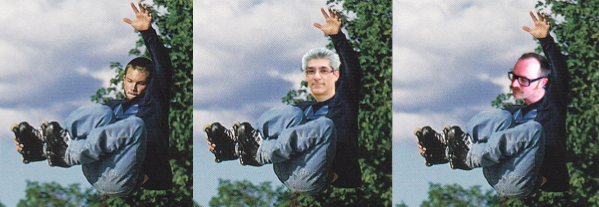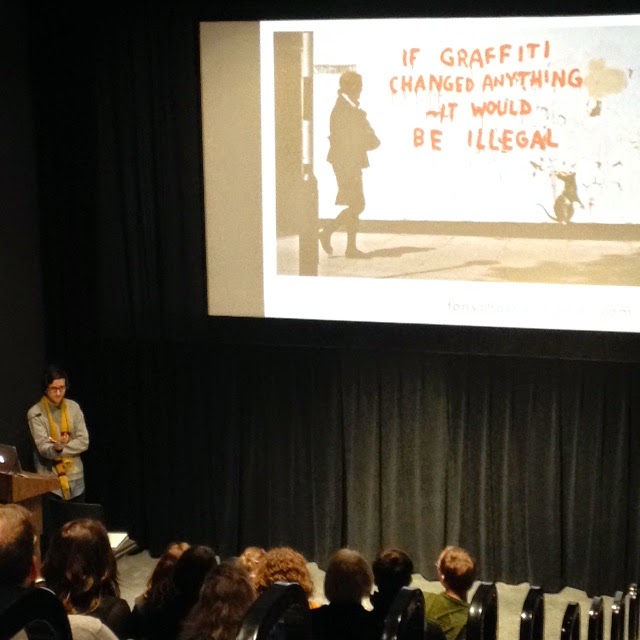Day Two: Gleaming the Cube
“Political Art & Street Art Definitions”
Christiane Merritt (Washington University, St. Louis)
Merritt argues that adopting the exemplar approach to the conditions for being street art results in certain kinds of street art (political street art) being needlessly ruled out as such. She begins by discussing some prima facie plausible conditions for street art:
Site Publicity: the work must be located in a public area
Audience Publicity: the public must be the proper audience
Illegality: the work must not be authorized or sanctioned by the relevant authority with legal standing
Merritt uses the work of Tatyana Fazlalizadeh & Guerilla Girls to challenge both site and audience publicity conditions and the work of Gran Fury to call out the illegality condition. What these all have in common, of course, is their political content.
“Street Art & Deception”
Shelby Moser (Kent)
Moser will be focusing on what it means for street art to be genuine. Before doing so she investigates the related or relevantly analogous notions of illegal/illicit, fakes/forgeries, replicas/reproductions, etc.
To help illustrate her view, Moser uses the case of Trappist Beer.
I’m sure that Shelby said several insightful things here but my laptop died so I had to search for an extension cord/outlet.
Also, scofflaw Gregg Horowitz brazenly brandished a follow-up despite Session Sheriff banishment of follow-ups to the Back of the Queue Badlands. High Noon Horowitz vs. Mad Dogma Mag Uidhir!
“The Lego Minifigure in Urban Art”
Roy T. Cook (Minnesota)
Roy will be examining the prevalence of the Lego minifigure in Urban/Street Art.
Question: What gives? Why the Lego minifigure?
Answer #1: Cuz it’s cool. The End.
Answer #2: Place of Lego in the history of designer art toys (Kid Robot, Dunny, Labbit, Kaiju for Grown Ups, etc.).
Roy points to the designer toys’ reliance on platforms (certain basic shapes all toys of that platform must share. LEGO minifigure and the street art prevalence thereof can be best explained by seeing it as representing the appropriate if not ideal (pseudo) platform.
Captain Roy Axiom Red Variant 1/150
“On the Illegality Condition in Street Art”
Tony Chackal (Georgia)
Tony aims to defend the illegality condition, arguing the crucial value aspects of street art require illegality for their preservation.
He begins by characterizing the world of street art as antithetical to the world of fine art (as an underground artworld set against its surface dwelling foil).
Tony argues that risk, danger, and audacity function as constitutive appreciable properties of works of street art.
Keynote Address
“Mainstreaming the Street: The Cultural Value of Illicit Street Art”
Professor Alison Young (University of Melbourne)
Abstract
Recent years have seen the practices conventionally described as ‘street art’ become increasingly familiar in the cultural mainstream. The work of street artists such as Banksy, Nick Walker, Swoon and D*Face have sold at auction for high prices, and are now regarded as highly collectable art. Museums and galleries in cities such as New York, LA, London, Paris and Melbourne have held exhibitions featuring works by street artists and many have purchased street artworks for their permanent collections. Street art, when placed on private property without permission is still illegal, and the very similar activities known as graffiti are still considered to be ‘vandalism’ or ‘anti-social’ and are seldom categorised as art. This lecture will think through some of the consequence of street art’s increasingly mainstream status in contemporary society, particularly for graffiti writers and artists who continue to work illicitly in the street.











